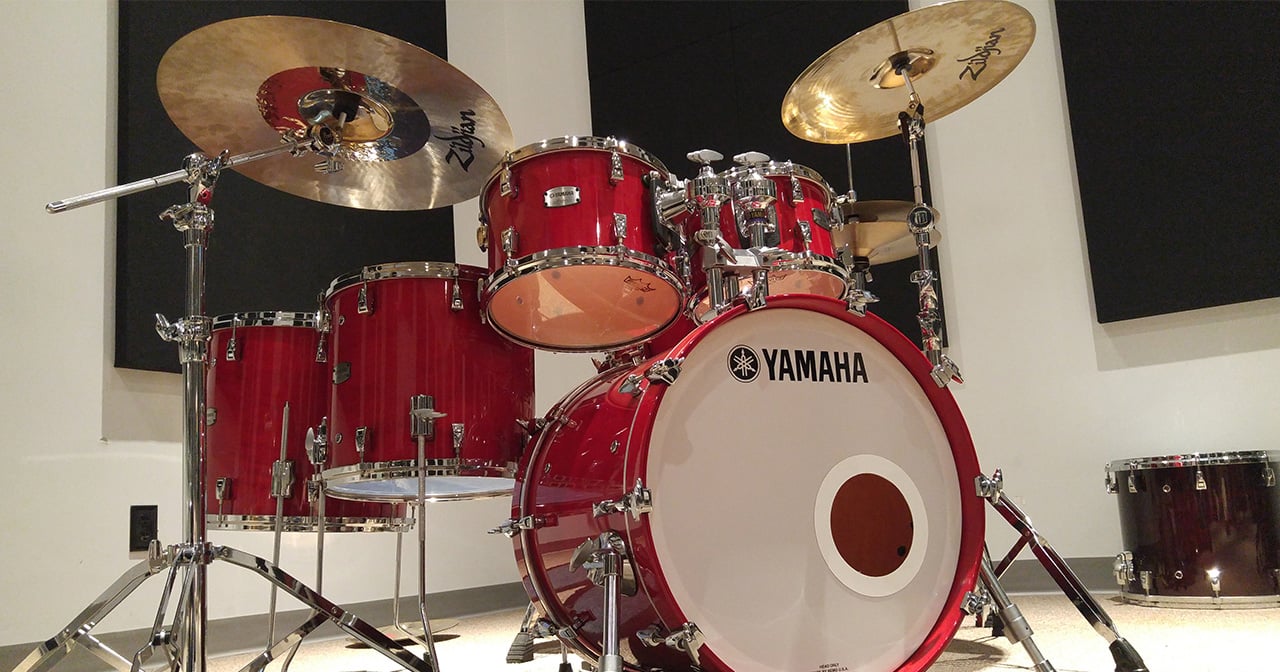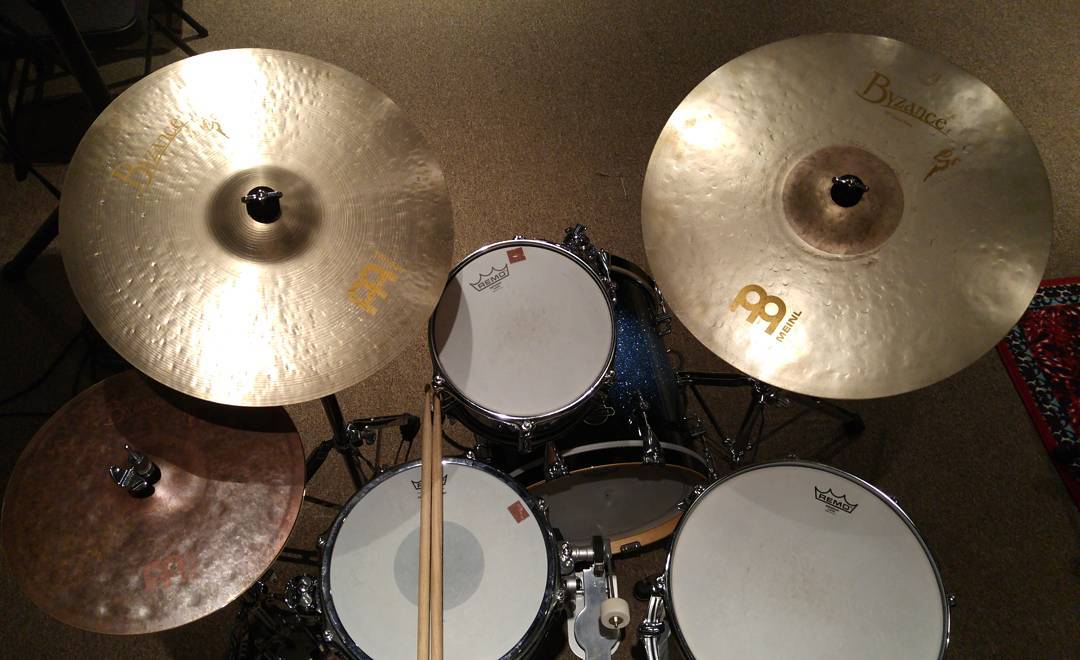
If you are a seasoned drummer with upcoming gigs and you want to make sure you have the gear you need for the job, you probably already know exactly what you are looking to buy. You know the sound you like and the type of drums needed to satisfy both you and the band leader or musical director. One trip to the drum shop or a quick click on the computer and you are ready to make your purchase.
If you are just starting to learn to play the drums, the many choices available in shell construction, drum sizes, and finish options can leave you dazed and confused at best. One way new drummers, or their parents, deal with this overload is by simply selected the cheapest drum kit they can find or choosing drums that have an appealing color. If you are new to this wonderful instrument, here are a few tips to help you sort through the myriad of possibilities that are involved in selecting your first or second drum kit.
The many choices available in shell construction, drum sizes, and finish options can leave you dazed and confused…
Years ago, printed drum catalogues offered drummers a glimpse of drum kit configurations that made sense for various musical styles. The types of wood the drums were made of was rarely discussed and the finish options were mostly pearl wraps. The kits were sold with “cymbals not included” but the hardware, which referred to cymbals stands, snare stand, hi-hat, and bass drum pedal, was included in the purchase price. This made buying a drum kit quite easy as everything you needed was part of the kit and had been manufactured by, or at least distributed by, the same company.

In more recent times, drum manufacturers and retailers have begun to sell drum kits in a “shell pack.” This means no hardware of any kind is sold with the kit. Only the drum “shells” are included which is not quite technically correct because the shell packs do of course include the lugs, tension rods, rims, and drumheads necessary to make the drum complete. These packs also occasionally include the rim mounts for the toms.
You can expand or contract the kit options to fit your needs and your budget.
This change in retailing allows for drummers to put together their own kits with as many cymbal stands or other hardware options as they like. If you prefer one company’s drums and another’s hardware, you can mix and match at will. You can expand or contract the kit options to fit your needs and your budget. All this flexibility works if you know what you want. If you are new to drumming, this may not be the case.
When buying your first drum kit, you need to think about what style of music you are playing the most. Hopefully, you are learning how to play all styles so that you can be the best musician possible but most people have a preferred musical genre or find that they are working in a particular music scene more often than others. Buying a kit that will fit multiple styles of music is a good way to go in the beginning.

One way to do that is to purchase moderately-sized drums. A “fusion” kit might be a good way to go. Fusion refers to a joining of the jazz and rock music styles so this type of kit could include a 14” snare or maybe a deep 13” snare, toms that range from 10” – 14”, and a 20” bass drum. (The measurements given are for the diameter of the drum.) This represents the best compromise between the typical drum sizes found in the drum industry today.
Another way to go, if you can afford to do it, is to buy a large kit and only use the appropriate parts of the kit for the style of music you playing at a given time. Let’s say you find a massive kit with mutiple toms ranging in size from 10” to 18,” two bass drums, 14” snare drum, and 13” side snare. If you were playing a jazz trio gig and needed a small drum kit, take the 10” rack tom and a 14” floor tom along with the 13” side snare. Use a conversion kit to make the 18” floor tom into a bass drum and now you have a great jazz kit all ready to go. Playing a country show on a small stage? Take one of the bass drums, the 14” snare drum, 12” and 13” rack toms, and a 14” or 16” floor tom. If you are playing a big rock show, set the whole kit up at once. Rental companies that provide gear for touring acts and television shows work off this same principle.
Really listen to the kit you are thinking about buying and go with what sounds best to your ear.
Most “entry level” drum kits do not mention what wood the shells are made from. Many of them are made from an affordable type of Mahogany called “Luan.” As you move up slightly in price, the type of wood begins to get discussed. Maple and birch are the two types you will see most often though other, more exotic, types, including the more expensive African Mahogany, are used in high-end professional drums. Birch shells provide a good mix of high and low frequencies. Maple shells have a bit more emphasis on the low frequencies than birch but either will give you a very acceptable drum tone.

Give a listen to both types of shells and decide what fits your musical taste and budget. Maple drums tend to be a bit more expensive than birch but prices have been coming down on all types of music gear in recent years so watch for sales and other special pricing opportunities. Like other instruments, drums can vary in tone so really listen to the kit you are thinking about buying and go with what sounds best to your ear.
You will also need to ask yourself how often you intend to move the drum kit. Drums can get scratched up easily especially if the finish is “natural” wood instead of a pearl wrap . A guitar player will rarely carry a nice guitar around without a case but you will see drummers do this often.
A guitar player will rarely carry a nice guitar around without a case…
If you are not playing live gigs or taking the kit to school functions, the purchase of a good set of cases can be delayed but as your playing improves, you will be called upon to move the drums more and more. Hard shell cases offer the best protection but a good set of padded bags will do the job well. The best advice here is to spend a little less on the drums and include a set of cases with your purchase.
By the time you are ready for your second set of drums, you will be more astute to what you are looking for and what genre of music you are working in the most. A shell kit makes a lot of sense in this instance because you can use the same hardware from your other kit and still have two kits available to you that fit different needs.
Professional drummers have multiple drum kits that fit whatever sound they, or the people that hire them, are looking for. As you begin your drum career, a few wise choices will take you to the one kit that you need for now.
Rick Long is a drummer, bassist, and freelance writer. He plays in multiple projects that cover many styles of music and has published frequently in the music press over the past twenty years.


By signing up you’ll also receive our ongoing free lessons and special offers. Don’t worry, we value your privacy and you can unsubscribe at any time.
We use cookies for traffic data and advertising. Cookie Policy »